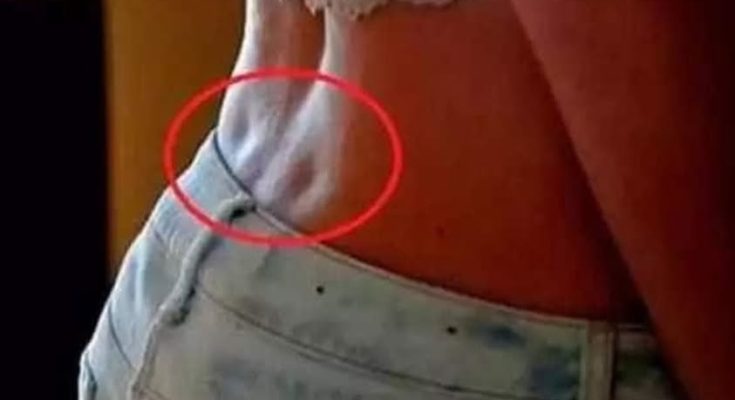Have you ever noticed those small indentations on the lower backs of some people? These unique marks, while not particularly common, have likely caught your attention at some point. They have a fascinating name inspired by the Roman goddess of beauty: Venus dimples. But what exactly are they, and why do only some people have them? Let’s dive into the details to uncover the beauty and mystery of these intriguing physical characteristics.
Officially termed fossae lumbales laterales, or “lateral lumbar indentations,” Venus dimples are small, symmetrical depressions located on the lower back. They sit just above the joint where the pelvis connects to the spine, near the upper buttocks. While their official name may sound clinical, their more popular moniker, Venus dimples, is widely recognized, even within the medical community. This informal yet poetic name emphasizes their association with beauty and allure.

The formation of Venus dimples is attributed to a small ligament that connects the superior iliac spine—the outer edge of the iliac bone—to the skin. These indentations are considered a hallmark of beauty because of their association with symmetry and balance, qualities often linked to physical attractiveness. The name itself pays homage to Venus, the goddess of love and beauty, who was often depicted with these features. Over time, Venus dimples became synonymous with an “imperfection of beauty,” celebrated as a rare and charming characteristic.
The rarity of Venus dimples adds to their appeal, sparking admiration and even envy among those who don’t have them. For some, these indentations represent the epitome of natural beauty, so much so that people sometimes go to great lengths to acquire them, including expensive cosmetic procedures. But is there a way to achieve Venus dimples naturally, without surgical intervention?
Interestingly, Venus dimples are more commonly found in women than men, though they can appear on men as well. When present on male backs, they are often referred to as “Apollo’s dimples,” a nod to the Greek god of beauty and strength. Despite their universal appeal, not everyone can achieve them, even with effort.
For those hoping to develop Venus dimples through exercise, the truth may be disappointing. Since this area of the lower back lacks muscles that can be toned or strengthened, no specific workout can create these indentations. However, if you are naturally predisposed to having them, losing excess weight and engaging in body-sculpting activities can make them more prominent and accentuated. Maintaining a healthy and active lifestyle helps define the natural contours of the body, enhancing the appearance of existing dimples.
The genetic basis of Venus dimples is another fascinating aspect of these physical traits. While scientific research on the subject remains limited, preliminary studies suggest that Venus dimples are likely hereditary. They may be passed down through genetic coding, though the exact genes responsible have yet to be identified. This genetic link adds an element of exclusivity, making them even more desirable for those who view them as a mark of beauty.
The allure of Venus dimples extends beyond aesthetics. Many people perceive them as a sign of good health and fitness due to their association with lean body types. While this perception isn’t scientifically proven, it adds to the mystique surrounding these unique marks. Their connection to symmetry, often regarded as a marker of attractiveness, further solidifies their status as a prized feature.
For centuries, the allure of rare physical characteristics like Venus dimples has inspired admiration, creativity, and even art. Venus dimples, with their ties to mythology and beauty, continue to captivate the imagination. They serve as a reminder of how our individual traits, whether inherited or acquired, contribute to our uniqueness and the diverse standards of beauty.
So, do you possess the coveted Venus dimples? Or perhaps you know someone who does? Whether you admire them from afar or cherish them as your own unique feature, Venus dimples represent much more than a simple indentation on the lower back. They are a celebration of individuality, a nod to our genetic heritage, and a testament to the enduring human fascination with beauty in all its forms.
Venus dimples may be rare, but their impact is undeniable. They spark curiosity, inspire self-confidence, and remind us that beauty often lies in the details—sometimes in the smallest, most unexpected places.



